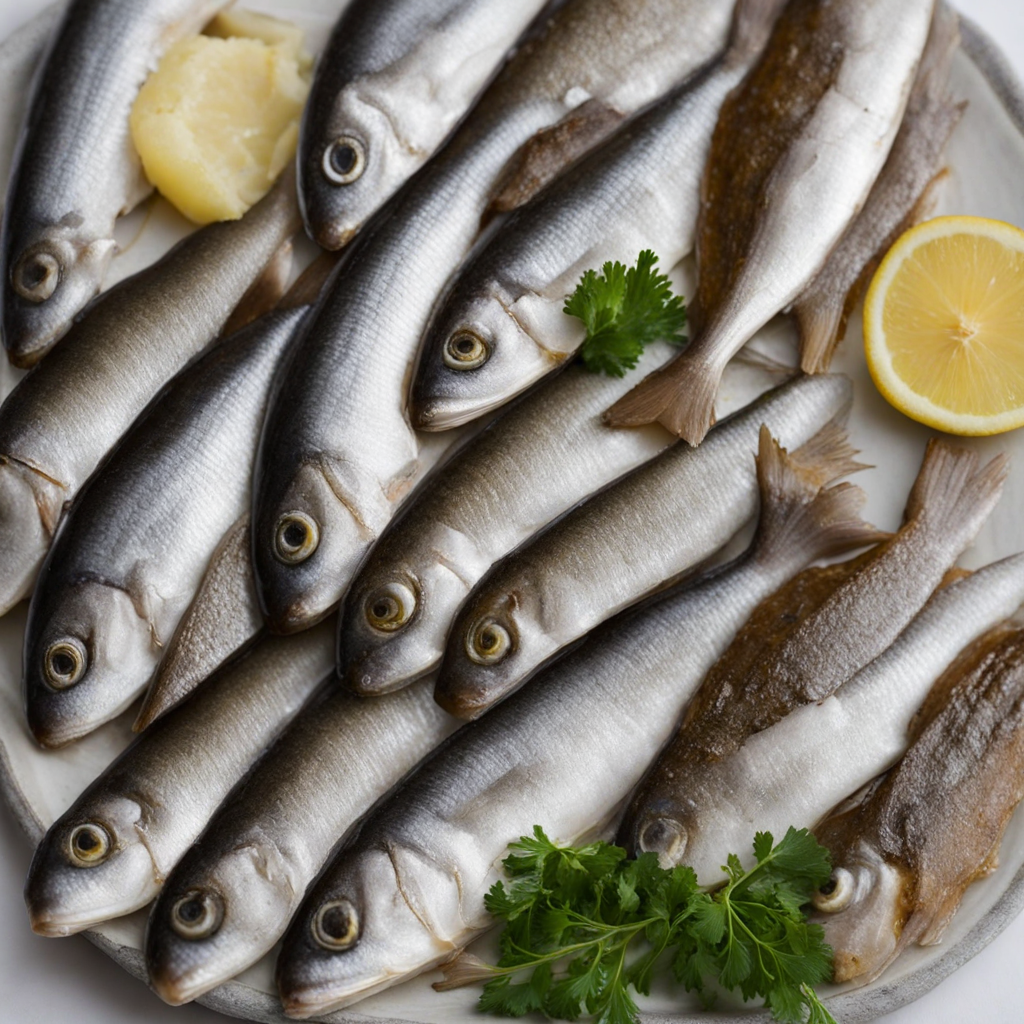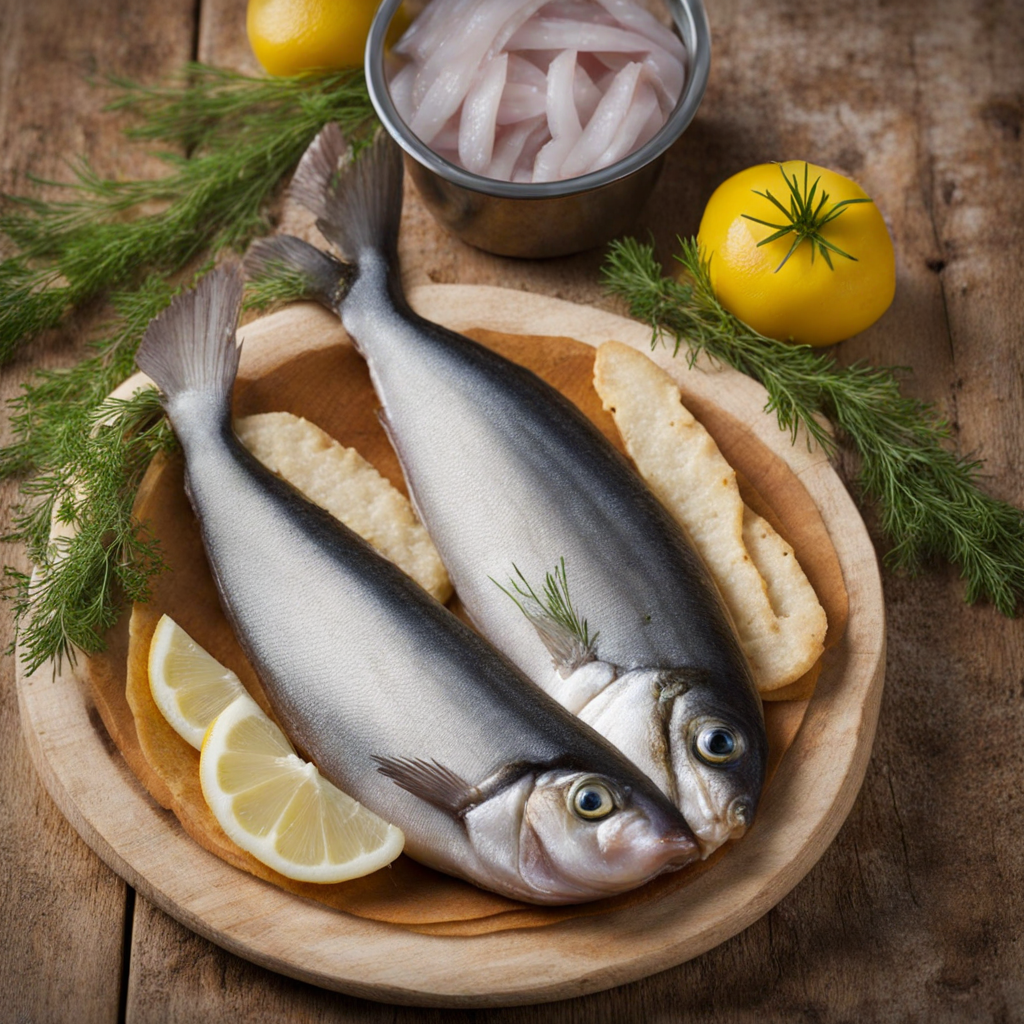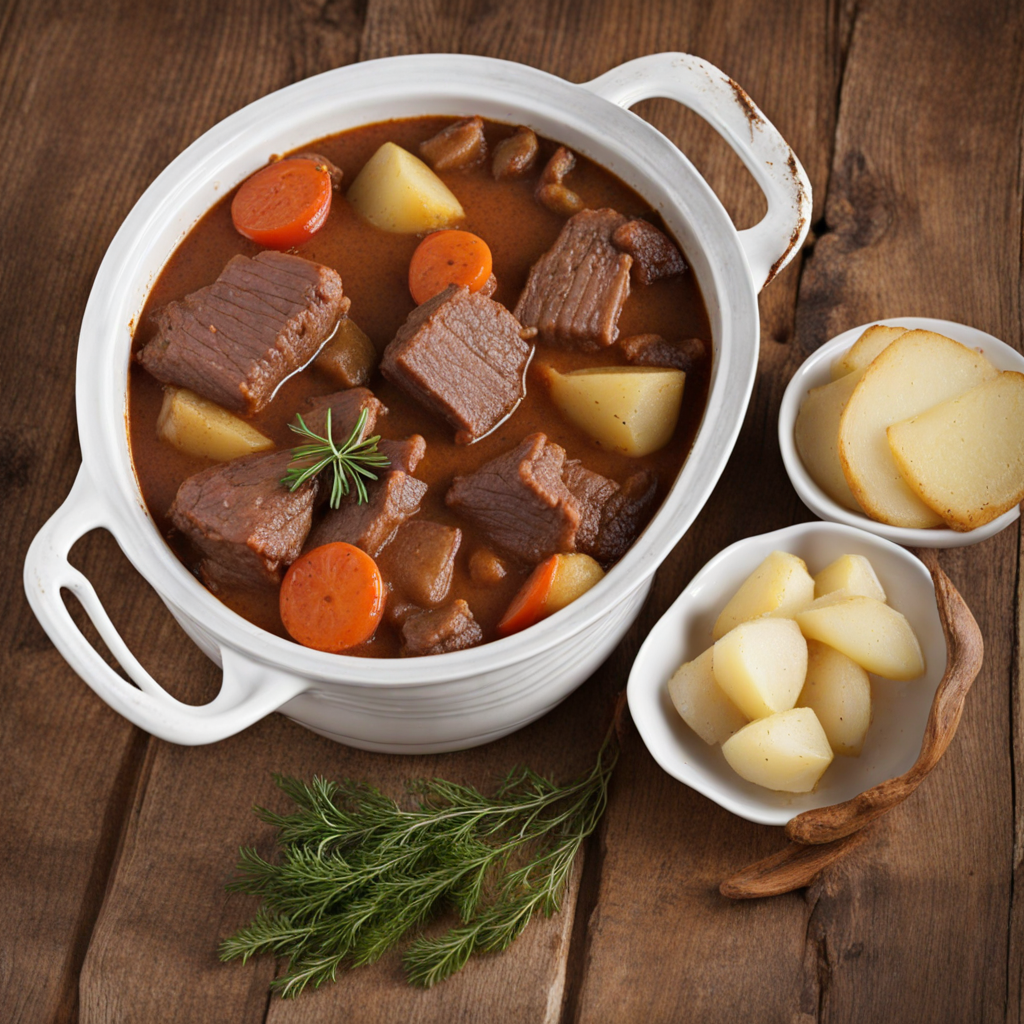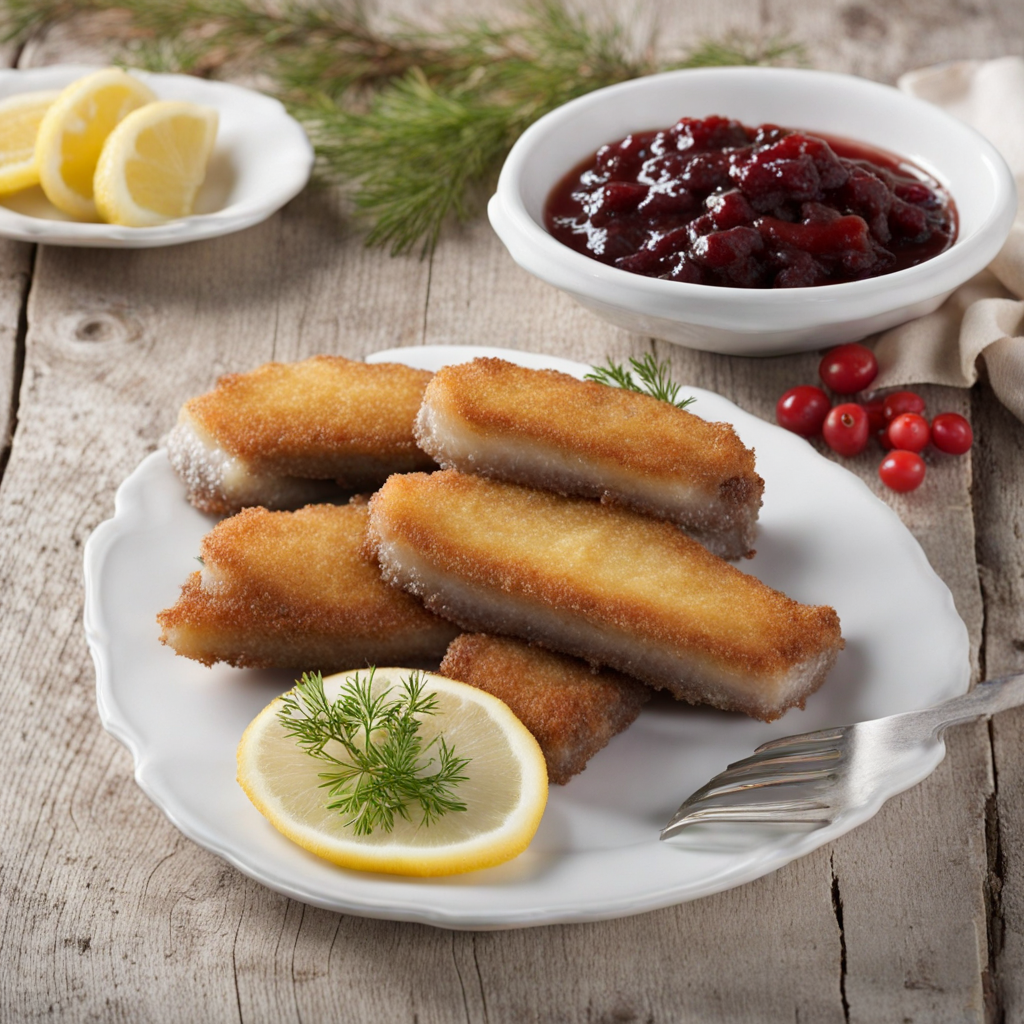Fermented Herring
Fermented herring, known as 'surströmming' in Sweden, is a unique culinary experience that tantalizes the taste buds with its bold and pungent flavors. This traditional dish is made from herring that has been carefully fermented in a brine solution, allowing the fish to develop a strong, distinctive aroma that can be quite polarizing. The fermentation process can last for several months, during which the fish undergoes a transformation, resulting in a salty, tangy flavor profile that is both intense and deeply savory. It's often described as an acquired taste, with devoted fans praising its complexity and the way it pairs beautifully with various accompaniments. When enjoying fermented herring, it is common to serve it alongside thinly sliced flatbreads, boiled potatoes, and a dollop of sour cream or onion. The contrast between the sharpness of the fish and the creamy, neutral flavors of the sides creates a delightful balance that enhances the overall tasting experience. Many Swedes also enjoy it with crisp, cold beverages, often opting for a traditional beer or snaps, which complements the dish perfectly. The cultural significance of surströmming is evident during the surströmming premiere, a festive occasion in late August where enthusiasts gather to celebrate the release of the new harvest. For those adventurous eaters willing to step outside their culinary comfort zone, fermented herring offers an unforgettable taste of Swedish heritage. The key to appreciating this dish lies in its rich history and the communal experience of sharing it with friends and family. Whether you savor it in a traditional setting or experiment with modern twists in your own kitchen, fermented herring promises a unique journey through the flavors of the sea that is unlike any other.
How It Became This Dish
Surströmming: A Dive into Sweden's Fermented Tradition Surströmming, a traditional Swedish dish known for its potent aroma and unique flavor, is much more than just fermented herring; it is a cultural artifact steeped in history, tradition, and the resilience of Swedish culinary practices. The name translates to "sour herring," and this dish is a testament to the ingenuity of preserving food in a region where fresh fish was not always readily available. Origins The roots of surströmming can be traced back to the early 16th century, although the exact timeline of its inception remains somewhat murky. It is believed that the practice of fermenting fish began as an essential preservation method in coastal communities, where fishing was a primary source of sustenance. The Baltic Sea, rich in herring, provided an abundant supply, and fermentation was a way to ensure that the catch could last through long winters when fresh food was scarce. During the 17th century, surströmming became more defined as a culinary tradition. The traditional method involves catching herring in the spring, when the fish is at its most abundant, and then brining it in a solution of salt and water. The fish is then left to ferment for several months, a process that transforms the fish into a pungent delicacy. The fermentation process creates lactic acid, which not only preserves the fish but also imbues it with a distinct sour flavor that has become synonymous with surströmming. Cultural Significance Surströmming is more than just a food item; it is deeply embedded in Swedish culture and identity. It is often associated with midsummer celebrations and is typically consumed during communal gatherings. The first Thursday of August is designated as "Surströmming Day" in Sweden, a day where enthusiasts and curious newcomers alike gather to partake in this unique dish. The act of eating surströmming is often surrounded by elaborate rituals. It is traditionally served with thin flatbreads, potatoes, and accompaniments like onions, sour cream, and crispbread. The combination of flavors and textures creates a dish that is both complex and satisfying, despite its strong aroma. For many Swedes, the experience of sharing surströmming with friends and family is a nostalgic reminder of their heritage, evoking memories of summer picnics and shared meals. Development Over Time As time progressed, surströmming underwent various transformations, influenced by regional tastes, modern culinary trends, and even international perceptions. In the late 19th and early 20th centuries, as transportation and refrigeration began to improve, the production of surströmming expanded beyond local communities. It became commercially viable, with factories developing methods to produce surströmming on a larger scale. This industrialization made surströmming more accessible, but it also raised concerns about quality and authenticity. In the mid-20th century, surströmming faced a decline in popularity as Sweden's culinary landscape evolved. The post-war era brought about significant changes in eating habits, with a focus on convenience and less emphasis on traditional foods. However, the 1980s and 1990s saw a revival of interest in traditional Swedish cuisine, spurred by a growing appreciation for local and artisanal foods. Surströmming, often viewed through a lens of nostalgia, began to regain its status as a cultural emblem. During this period, a notable event occurred: the establishment of the Surströmmingspremiären, or Surströmming Premiere, which marks the first day of the season for opening cans of surströmming. This event has become a significant occasion, celebrated with festivals, competitions, and public gatherings. It underscores the communal aspect of surströmming consumption, as people come together to share in the experience, regardless of whether they are seasoned enthusiasts or first-time tasters. Modern Perspectives Today, surströmming is viewed through a dual lens of admiration and trepidation. For many Swedes, it represents a connection to their roots and a piece of culinary heritage that should be preserved. Internationally, however, surströmming is often met with skepticism due to its intense smell, which some describe as akin to rotten eggs or strong cheese. This infamous reputation has led to its classification as one of the world’s most challenging foods to consume. Despite this, surströmming has found its way into the global culinary scene, embraced by adventurous eaters and food enthusiasts around the world. Chefs have begun to experiment with surströmming, incorporating it into modern dishes, using it as a flavoring agent, or pairing it with innovative ingredients that temper its strong taste. This fusion of traditional and contemporary cooking has helped to introduce surströmming to new audiences while keeping the essence of the dish alive. Environmental and Ethical Considerations As the world becomes increasingly aware of sustainability and food sourcing, the fishing practices associated with surströmming have come under scrutiny. Overfishing and environmental changes in the Baltic Sea have raised concerns about the long-term viability of herring populations. In response, Swedish authorities and fishery organizations have implemented stricter regulations and sustainable practices to ensure that surströmming can be enjoyed for generations to come. Conclusion Surströmming is a remarkable example of a food that transcends mere sustenance; it is a window into the history, culture, and resilience of Sweden. From its humble beginnings as a preservation method to its status as a celebrated dish, surströmming embodies the spirit of Swedish culinary tradition. As it continues to evolve in a modern context, the dish remains firmly anchored in the heart of Swedish identity, reminding us of the importance of heritage, community, and the diverse flavors that define a culture. Whether enjoyed in the company of friends or as part of a gastronomic adventure, surströmming invites us to explore the rich tapestry of human experience woven into our food.
You may like
Discover local flavors from Sweden







